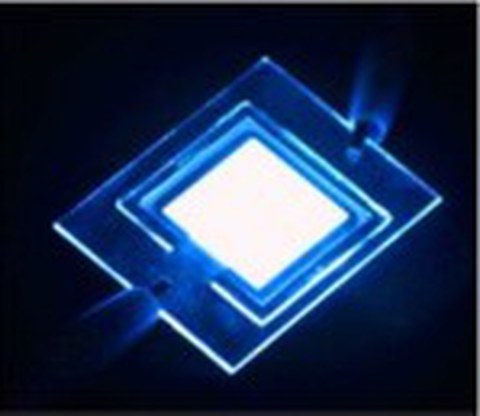Oct 28, 2022
TUD researchers develop new emitter material for high-brightness and long-life OLEDs
Scientists at TU Dresden have succeeded in synthesizing new phosphorescent, platinum-based emitter complexes for high-brightness and long-life OLEDs. The results were published this week in the renowned journal "Chemistry - A European Journal".
Due to their flexible applications and comparatively low manufacturing costs, organic light-emitting diodes (OLEDs) are increasingly conquering the electronics market, for example in cell phone displays or TV screens. Compared with conventional (inorganic) light-emitting diodes, however, OLEDs still lag behind, especially in terms of longevity and luminous efficacy.
Thomas Strassner, professor of Physical Organic Chemistry at TU Dresden, and his team are researching materials for OLED emitters, the heart of the technology, to make them more durable and luminous: "We synthesize and investigate metal-organic complexes with regard to their photophysical properties and suitability as blue emitters in OLEDs. One of the most important goals here is to develop a fully phosphorescent emitter system, with our main interest being blue emitting compounds with short decay times. We have been able to synthesize and patent various phosphorescent iridium and platinum compounds with excellent photophysical properties in recent years."
Now, the team has succeeded in synthesizing a series of phosphorescent bimetallic platinum(II) complexes that impress with their high luminous efficacy and longevity. With quantum efficiencies of up to 90% and emission times of about 2µs, the novel class of materials promises to significantly increase the efficiency of OLED technology, potentially enabling broader application of OLED products.
"We synthesized the complexes under inert gas, characterized them using various techniques, and were able to provide structural evidence using two X-ray structures," explains Thomas Straßner, adding, "in our current research, we are now focusing on the further development of complexes with borate ligands, another promising emissive material."
Original publication:
Sergej Stipurin und Thomas Strassner. „Phosphorescent Bimetallic C^C* Platinum(II) Complexes with Bridging Substituted Diphenylformamidinates“. Chemistry – A European Journal. DOI: doi.org/10.1002/chem.202202227
Media inquiries:
Prof. Dr. Thomas Straßner
Physical Organic Chemistry
TU Dresden
Email:
Tel: +49 351 463-38571

